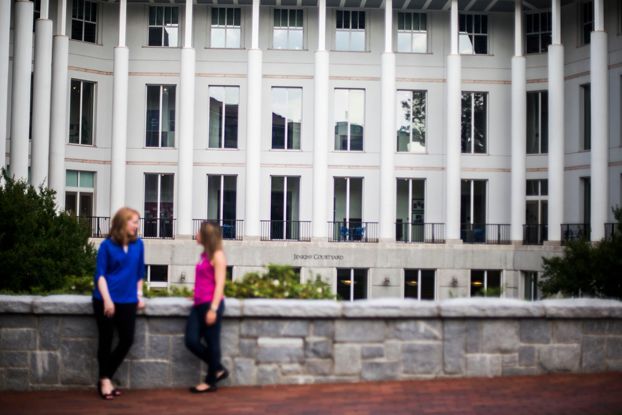Earlier this week the dean of Columbia Business School, Glenn Hubbard, released an essay examining business school rankings. His thoughts are published on Fortune.com.
“Rankings do matter,” he writes, “though perhaps not in the way that many would expect.”
Hubbard says rankings should measure the quality of a business school based on students. In more detail, rankings should measure inputs (details on acceptance rates and yield) and outputs (job offers and salary).
Most rankings, including Bloomberg Businessweek and U.S. News and World Report use the same — or similar data. In fact, all of Hubbard’s suggested inputs and outputs are available to those seeking an MBA.
So, Poets & Quants took the next step.
Hubbard invites applicants to ‘put these pieces together… and the picture that emerges might be shocking to some.’ So that is exactly what Poets&Quants did, starting with our own ranking of the top 25 U.S. business schools. To measure inputs, we collected two sets of data: The number of applications an MBA program receives against the number of class seats available (which is preferable to total applications because smaller schools obviously would be at an unfair advantage) and yield, the percentage of applicants who enroll in the MBA program once admitted (because this number tells you which schools are preferred by candidates and which ones are not). We then compared those two “inputs” against the “outputs” recommended by Dean Hubbard: salary and job offers, or more specifically average starting salary and bonus and the percentage of a class employed three months after graduation. All the data is for the Class of 2014 which graduated last spring.
Poets & Quants began by ranking schools in each input and output category. Goizueta Business School is in the Top 25 in all:
Individual Stats
Overall Ranking
| School | Index | P&Q Rank | Apps per seat | Yield | Pay | Jobs |
|---|---|---|---|---|---|---|
| 1. Stanford | 100.0 | 1 | 17.9 | 78.7% | $142,834 | 92.1% |
| 2. Harvard | 91.3 | 2 | 10.2 | 88.8% | $144,750 | 89.4% |
| 3. MIT | 86.2 | 7 | 11.7 | 62.3% | $142,936 | 92.8% |
| 4. Berkeley | 85.3 | 10 | 14.4 | 52.5% | $140,935 | 86.7% |
| 5. Wharton | 82.0 | 4 | 7.1 | 68.0% | $142,574 | 95.6% |
| 6. Columbia | 81.6 | 5 | 7.8 | 70.4% | $139,006 | 91.1% |
| 7. NYU | 79.8 | 10 | 11.3 | 48.7% | $135,933 | 90.4% |
| 8. Chicago | 79.0 | 4 | 7.2 | 59.4% | $137,615 | 97.2% |
| 8. Tuck | 79.0 | 8 | 8.7 | 52.2% | $142,489 | 93.8% |
| 10. UCLA | 78.1 | 14 | 11.7 | 48.2% | $127,535 | 88.6% |
| 11. Kellogg | 77.2 | 6 | 6.7 | 63.9% | $136,357 | 88.6% |
| 12. Foster | 75.9 | 23 | 9.8 | 44.7% | $125,367 | 95.8% |
| 13. Darden | 75.5 | 13 | 8.4 | 45.8% | $136,474 | 93.4% |
| 14. Duke | 75.4 | 9 | 7.8 | 50.9% | $137,154 | 89.8% |
| 15. Yale | 73.9 | 12 | 8.5 | 49.5% | $126,871 | 88.9% |
| 16. Olin | 73.1 | 24 | 12.1 | 30.9% | $111,974 | 96.9% |
| 17. Cornell | 72.8 | 15 | 6.3 | 52.6% | $132,316 | 89.8% |
| 18. Emory | 72.5 | 20 | 7.5 | 43.5% | $128,347 | 94.8% |
| 18. Michigan | 72.5 | 11 | 5.5 | 50.9% | $140,497 | 89.7% |
| 20. Texas | 72.0 | 19 | 7.9 | 44.4% | $126,160 | 91.3% |
| 21. Tepper | 71.4 | 17 | 6.9 | 46.6% | $131,865 | 88.3% |
| 22. Kelley | 68.4 | 20 | 6.6 | 45.6% | $119,581 | 88.1% |
| 23. UNC | 67.6 | 18 | 6.8 | 37.9% | $124,641 | 89.0% |
| 24. Owen | 66.3 | 25 | 5.3 | 44.7% | $113,830 | 90.8% |
| 25. Georgetown | 64.4 | 22 | 6.1 | 34.5% | $118,938 | 88.5% |
Click here for complete Poets & Quants methodology.










